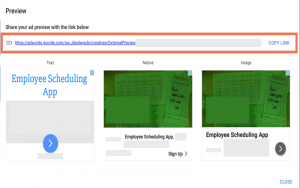— March 1, 2019

The further we move into the 21st century, the more we evolve into a technology-dependent population. The things we do, buy and eat are all tied to an online to offline world. This dependency is expanding beyond the Millennial and Generation Z age groups into the older generations believed to be impenetrable against any ultra-modern advancements. This assertion is not meant to come across negatively, but rather to emphasize that we are at an almost unbelievable time with access to limitless information, and our lives online are shaping our offline lives more than ever before.
Online to Offline Is Here to Stay
What’s funny is that we seem to be at a war with ourselves and the changing times. We want to do things the “old-fashioned way,” yet we cannot help but appreciate the ease and time-saving capabilities that modern technology offers us. When was the last time you sent out a paper invitation for a party? Creating a Facebook Event is not just free – it’s also instant. Digital invites are perfect for the spontaneous host, and they could not be more accommodating for a last-minute change of venue or unexpected crisis.
Think about making plans for a Saturday night. In seconds, you can easily find a list of events happening in your area, all through your social media profiles.
These are just a couple of examples of how our digital behavior impacts our lives offline; there are hundreds of ways that we seamlessly integrate technology into everyday tasks. We often don’t notice we’re doing it! It’s so commonplace to organize a group text to make plans, find a new restaurant or coffee shop on Instagram to check out over the weekend or buy tickets to that tour you saw a friend post about. We’re more digitally intertwined than we’ve ever been.
Social Media and Current Events
For the 2016 Presidential Election especially, the increased prominence of social media use in regard to current events was brought to the forefront. Social media became citizens’ personal platforms to write, share news stories, and attempt to both influence and foster dialogue online.
While there is something neat about this fact, it also posed the question of where exactly social media users were getting their information. What about those who don’t watch TV news or read newspapers? Well, the answer is that many people receive news through their social media channels. Pew Research Center concluded that in 2018, 68 percent of American adults at least occasionally read and learned the news through their social media accounts. It’s never been easier, as FOX, CNN, MSNBC and other outlets have pages that publish news in real-time, as well as apps for people to download right to their smartphone.
The Capacity of Micro-Moments
Everyone in possession of a smartphone or smart device experiences daily what Google dubbed as “micro-moments” several years ago. This is essentially the split second before a consumer searches for something. Google put it perfectly back in 2015:
“But then there are the other moments – the I want-to-know moments, I want-to-go moments, I want-to-do moments, and I want-to-buy moments – that really matter. We call these “micro-moments,” and they’re game changers for both consumers and brands. Micro-moments occur when people reflexively turn to a device – increasingly a smartphone – to act on a need to learn something, do something, discover something, watch something, or buy something. They are intent-rich moments when decisions are made and preferences shaped.”
A “game changer” is right. Smart devices have been revolutionary in many realms – academia, medicine, technology, events, and especially marketing and commerce. Information can be disseminated instantaneously and found just as quickly.
Micro-Moments Meet the Super-Empowered Consumer
In 2019, local brands and corporate empires alike are attempting to appeal to the Super-Empowered Consumer. It exists in every single one of us who enjoys the technological conveniences of today – search engines, computers, smartphones, smart speakers, smart watches…the list goes on. With this much information at their fingertips, the Super-Empowered Consumer never waits for their information longer than a minute. They want their information to be correct and in real time – and they rely on the fact that it will be that way every time.
Now, tie that with micro-moments. If a consumer is on the hunt for something specific, be it a product, store or event, the duty now falls to the brand. Are they capitalizing on this opportunity?
It’s Not Too Late for Brands to Reclaim the Moments
There are millions of micro-moments occurring every day, all over the world. Brands and businesses of any scale that feel they have ignored micro-moments can implement strategies now to reverse the damage.
According to WebProNews, we have reached a point where 91 percent of people check their phones mid-task, and 46 percent of Americans reach for their cell phone first thing in the morning when they wake up. These statistics only reinforce the need to shift the focus even further to mobile. While a clean, top-notch mobile website for a brand can mean the difference between gaining business or not, there is so much more that needs to be done.
So, What Should Brands Do Now?
That’s the million dollar question! Businesses and brands need to make sure they remain prevalent in this technology-dependent world. And guess what? It comes full-circle, back to establishing what we’ve stressed for so long: a little acronym called E-A-T.
If you’re new to the concept, E-A-T stands for expertise, authoritativeness and trustworthiness, and they form the necessary trifecta for gaining and keeping consumers in 2019 and well beyond. Google established this concept a while back, but it’s crucial to reiterate it when it’s time to formulate a content strategy that attracts the Super-Empowered Consumer.
Regardless of their size, brands that produce frequent, original content are ranked higher by search engines, and will gradually make it closer to page one. When the content producers write tactically, you better believe Google notices! These tactics include proper keywords and passages that draw readers in, which in turn increase accumulated traffic. With these measures, all three E-A-T qualities are strengthened for a brand. If an article or webpage that answers a querier’s question makes the featured snippet at the very top, that’s a huge feat! This mainly occurs when it comes to mobile searching.
So, guess what? It’s time to write with even more purpose. There are consumers out there who need to see services or events offered, but won’t be able to view them as easily if you don’t take the time to establish E-A-T.
Online to Offline – It Impacts What We Buy, Where We Eat and What We Do
Now that we’ve covered multiple examples of how online life affects the everyday person’s offline existence, we’re left to question whether technology’s impact on our daily lives is more exciting or frightening. One thing is for sure – it should be an eye-opener, especially for local businesses that need to re-evaluate how they use their social media, the state of their mobile websites, their capitalization of micro-moments, and their plan for increasing their online authority.
Not sure where to start? Well, at Advice Local, we’re all about embracing this ongoing task of keeping tech-obsessed consumers interested in what brands have to say. Curious about how we can help you? Request a demo today.
Digital & Social Articles on Business 2 Community
(61)






